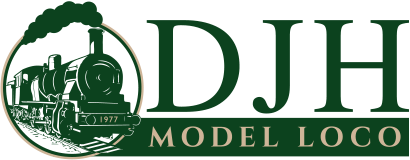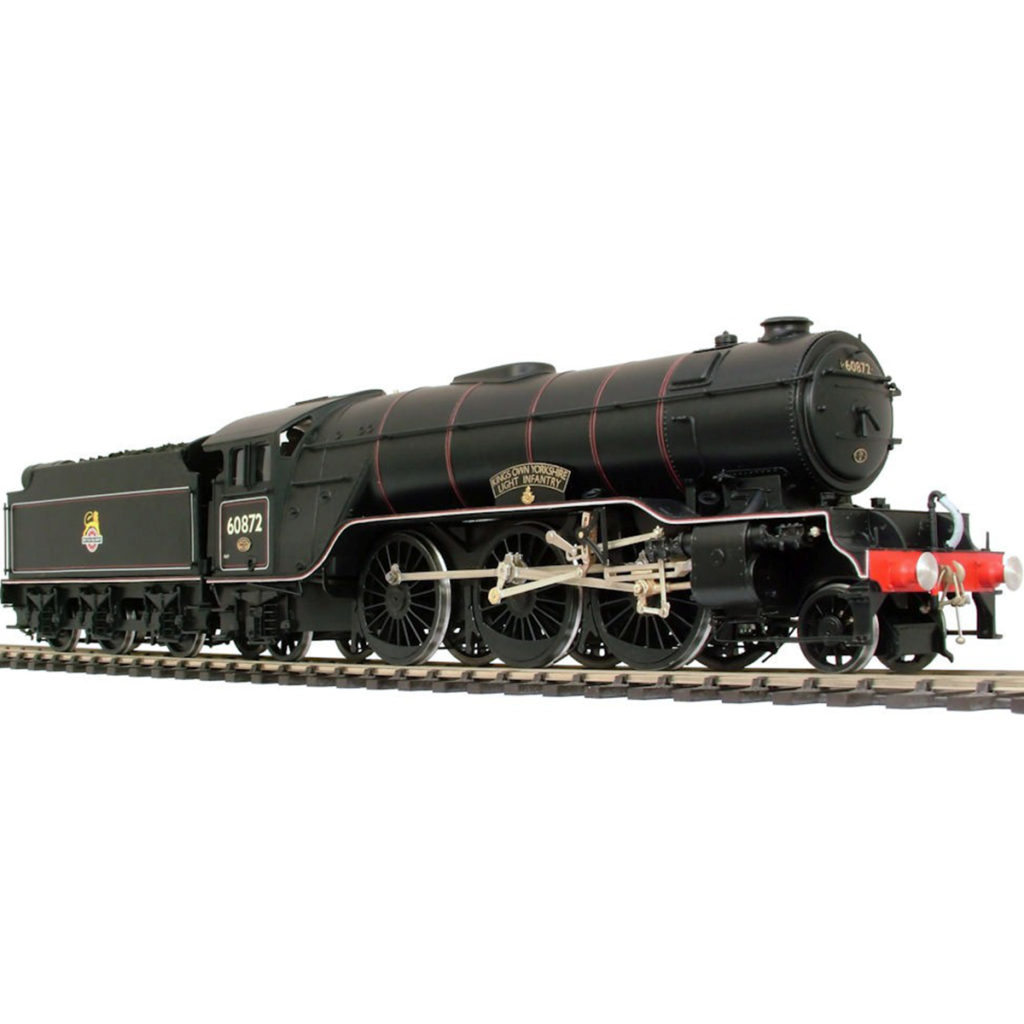Helpful hints for inexperienced modelers by Tony Wright – assistant editor of BRM magazine and lifelong model-maker of over 400 locos.
DJH kits are among the best on the market with regard to the accuracy of components and ease of construction. By choosing a suitable kit from their range with regard to your own experience, no great problems should be encountered with its construction if a few simple rules are followed.
Firstly, check all components against the list provided in the instructions. It is wise to leave any smaller castings and pieces in the polythene wrapping until they are required. In the event of any bits being missing or damaged, please complete and return the parts form in the kit, stating parts and numbers.
Tools
A few simple tools are a prerequisite for making any metal loco kits. Our suggested list contains:
- Fine files – flat, round (mousetail), half round, square etc. These are usually described as Swiss files and a set will stand you in good stead. However, they clog easily and for heavier work warding files are more suitable, again in a range of different types. Small pliers – flat, snipe-nosed and round if possible, a good set of tinsnips, small craft knife and fibreglass propelling pencil brush are also useful. A range of small drills, mini-drill (if possible), pin chuck and a set of small taper broaches are also most useful, along with fine tweezers and a range of fine emery papers. A small engineers square will aid getting components together straight and parallel.
- Larger tools might include a small vice, piercing saw, razor saw, and junior hacksaw. As with all tools, buy the best you can afford, adding to the set as experience and finance permits. The model press should provide you with a list of suitable suppliers. Before beginning, identify the actual locomotive of the class you plan to model. To this end, collect a number of good photographs and, if possible, an accurate 4mm drawing. Railway pictorial volumes usually can supply a selection of different prototype pictures. Remember, throughout a loco’s life there were often substantial alterations to its appearance. Most of the kits in the Grandspot range provide a selection of different bits and pieces for many of the components. By reference to a photograph, choosing the appropriate piece is made easier. Good drawings can usually be sourced via the model press.
It is always wiser to make the chassis before the body and for actually fixing the kits together there are two possibilities – glue or solder, the latter usually favoured by the more experienced for it is by far the better way.
Before each method is contemplated, mating components must be cleaned of any flash (odd bits left on castings after removal from the moulds) by using files and fibreglass brush. By employing a ‘dry run’, the true fitting of parts can be checked, it being occasionally necessary to file an edge to fit a slot etc.
The best glue for general construction is 5 minute epoxy – several manufacturers produce this twin tube system. Any parts must be held together whilst being fixed but the bond is durable and strong when cured. Smaller parts can be fixed with superglue, any excess adhesive being cleaned off later.
As mentioned, soldering is the better option, though both methods can be used happily together. Any holes must be cleared with the appropriate bit, broach or reamer – the diameters are given in the instructions.
For fixing parts to the chassis 145-degree melting point solder is best, using phosphoric acid flux and a minimum 25-watt iron. It is wise to paint the assembled mainframes before fitting the axles and wheels.
Check constantly for free running as you proceed with the chassis. Any tight spots are best eradicated at source before moving onto the next stage, particularly when erecting any valve gear. Etched body and tender components may be soldered together in the same manner as the chassis. Where a cast metal component is to be soldered to an etched one, the latter part must be tinned first – that is a thin layer of 145-degree solder applied to the etching. Cast parts can then be soldered using 70-degree low melt solder, phosphoric acid flux and, for preference, a temperature controlled iron. Many die-hards solder white metal with a full mains iron but this can easily lead to a melted, destroyed casting. By employing a temperature controlled iron, the bit never reaches a temperature high enough to melt the parent metal, though the wattage (its power of recovery) remains the same. For those afraid or unhappy about the notion of soldering, practise on any spare scraps of white metal or spare parts not required provided in the kit. Competence will soon be attained. Any tiny details can be secured with adhesives if preferred, particularly if they are not load bearing.
When your model is completed and tested, attention must be turned to painting. This is a subject big enough to take a whole book, not just a short piece such as this. Basically, the model should be thoroughly cleaned – warm water, an old toothbrush and household Ajax are most suitable, everything being washed completely afterwards.
After being allowed to dry, ordinary car acrylic grey or red primer, sprayed straight from the can, can give a satisfactory base. Work in a warm, dust-free atmosphere and wear a mask. Top coats can be applied by car spray, air brush or sable. Some car colours are quite close to railway colours, though they are usually too glossy. A good airbrush will result in an excellent finish using the proprietary paints available. Hand painting with a decent sable is useful, particularly where secondary and tertiary colours are involved. The use of Maskol or low tack masking tape makes painting up to adjacent colours easier.
Experts can line and letter by hand. For ordinary mortals, transfers, available through the model railway trade are most useful. Most railways and regions are represented from a range of different manufacturers.
This little guide is far too small to offer anything but the most rudimentary advice. We recommend acquiring a range of suitable modelling books – most techniques and processes are described from one publisher or another. The model press too is a source of handy information – often an article describes the construction of exactly the kit you had in mind. Joining a model railway club can be beneficial too, there usually being someone there who can give practical first hand advice.


